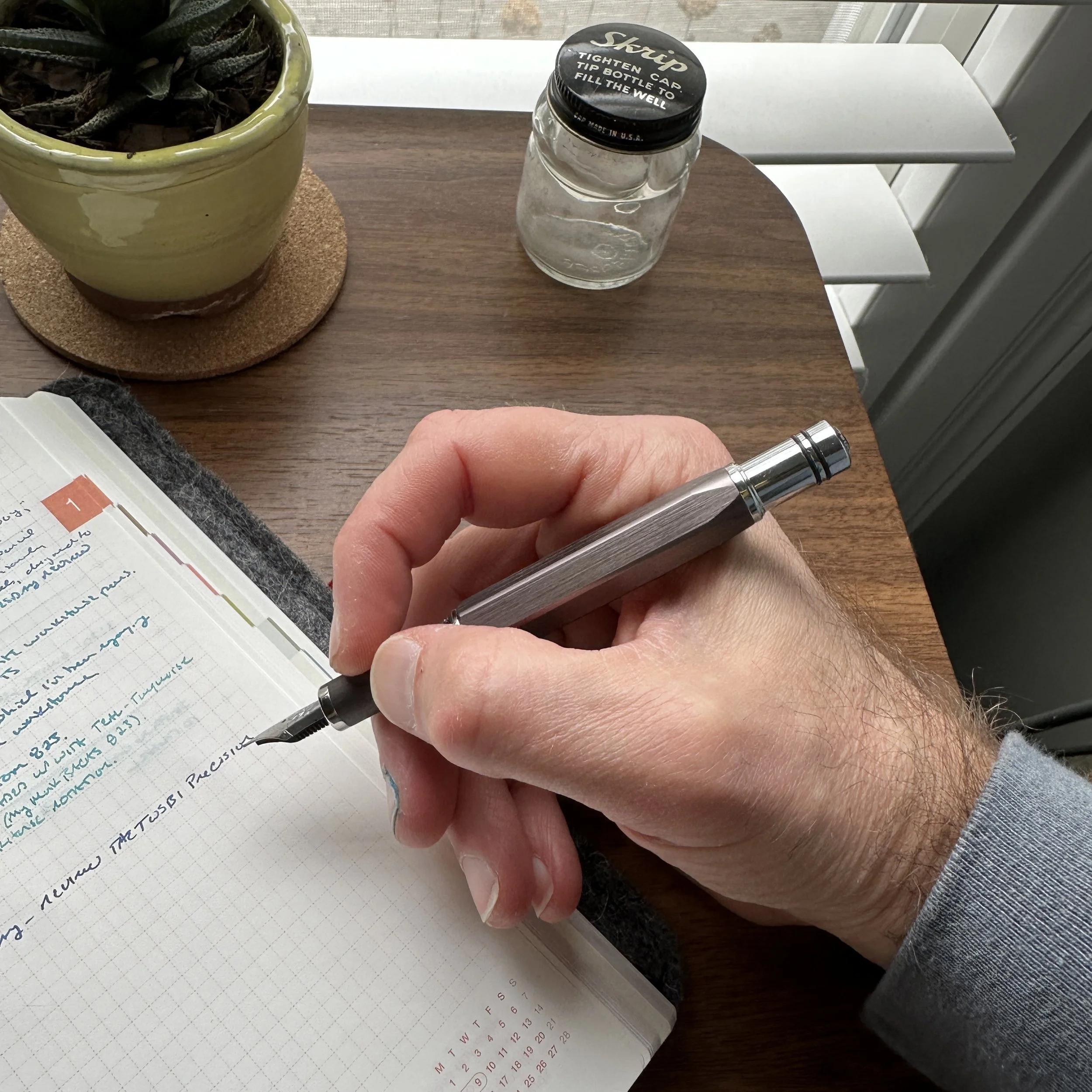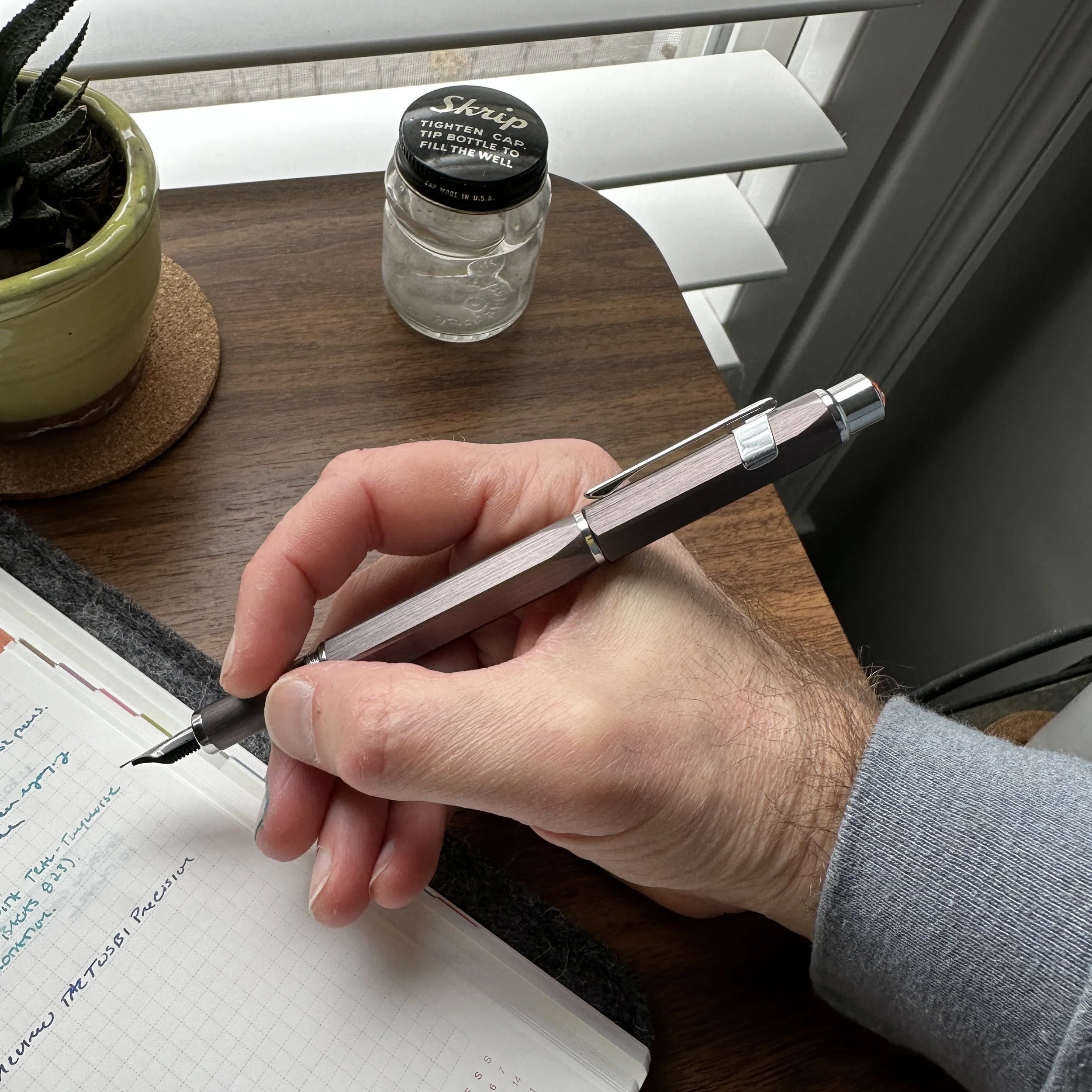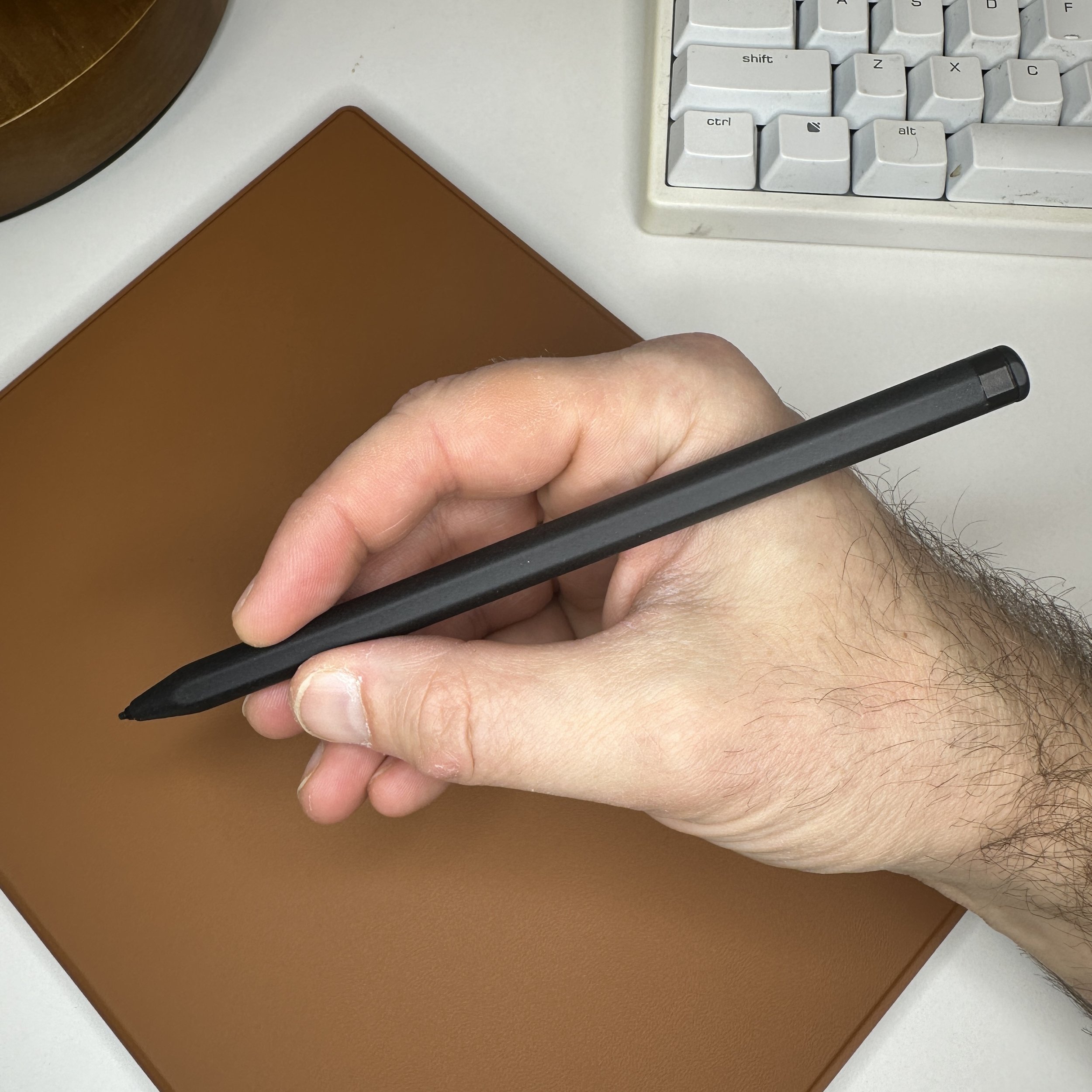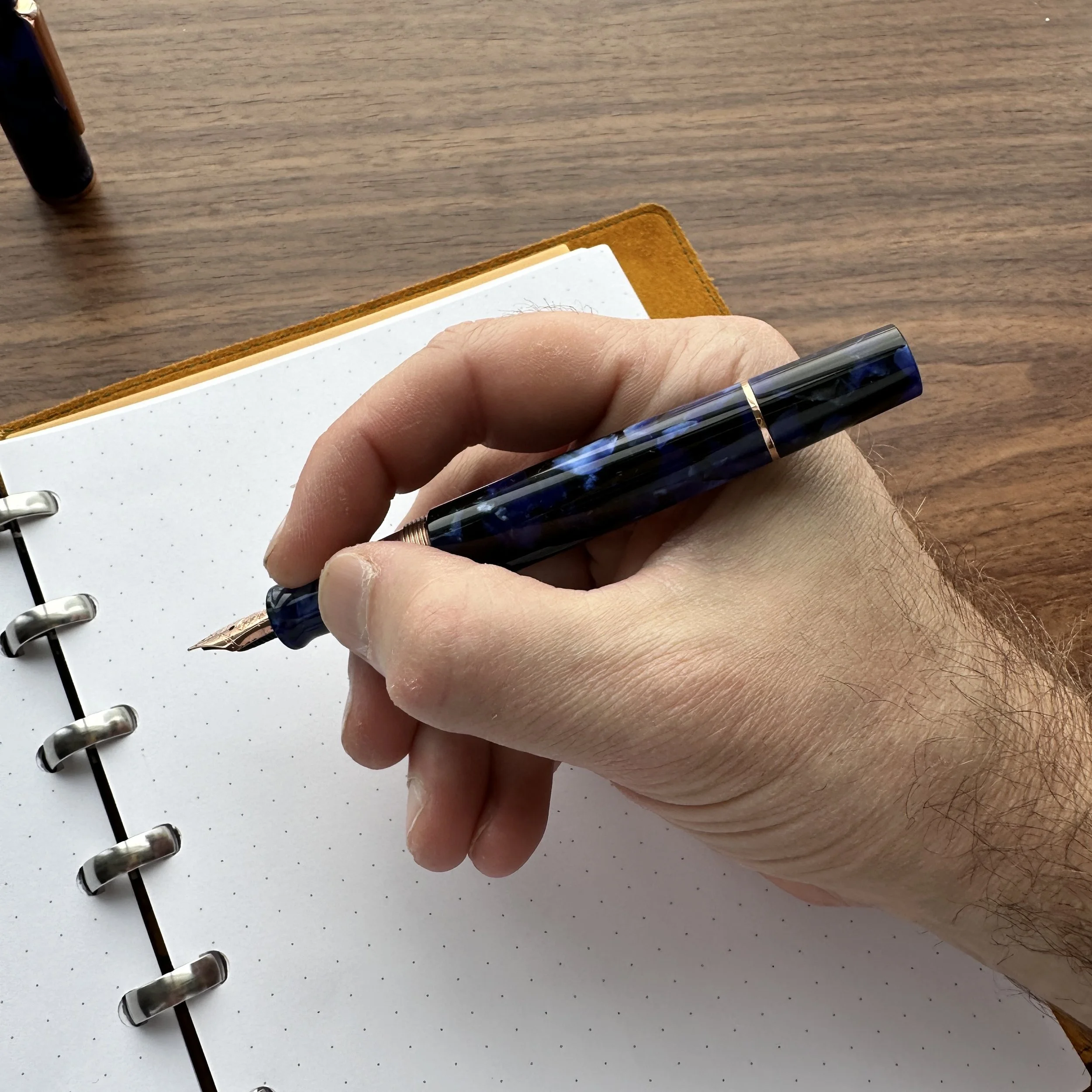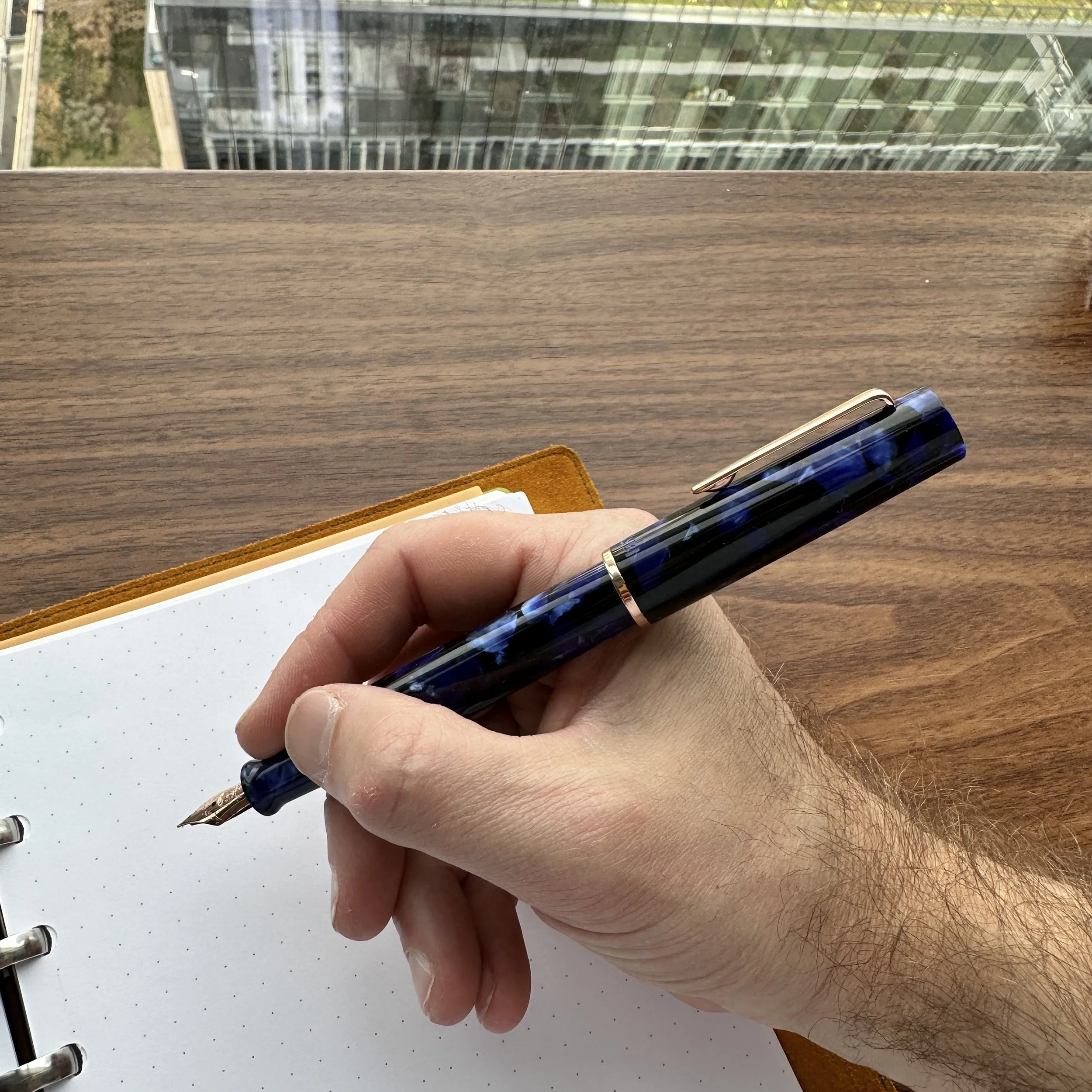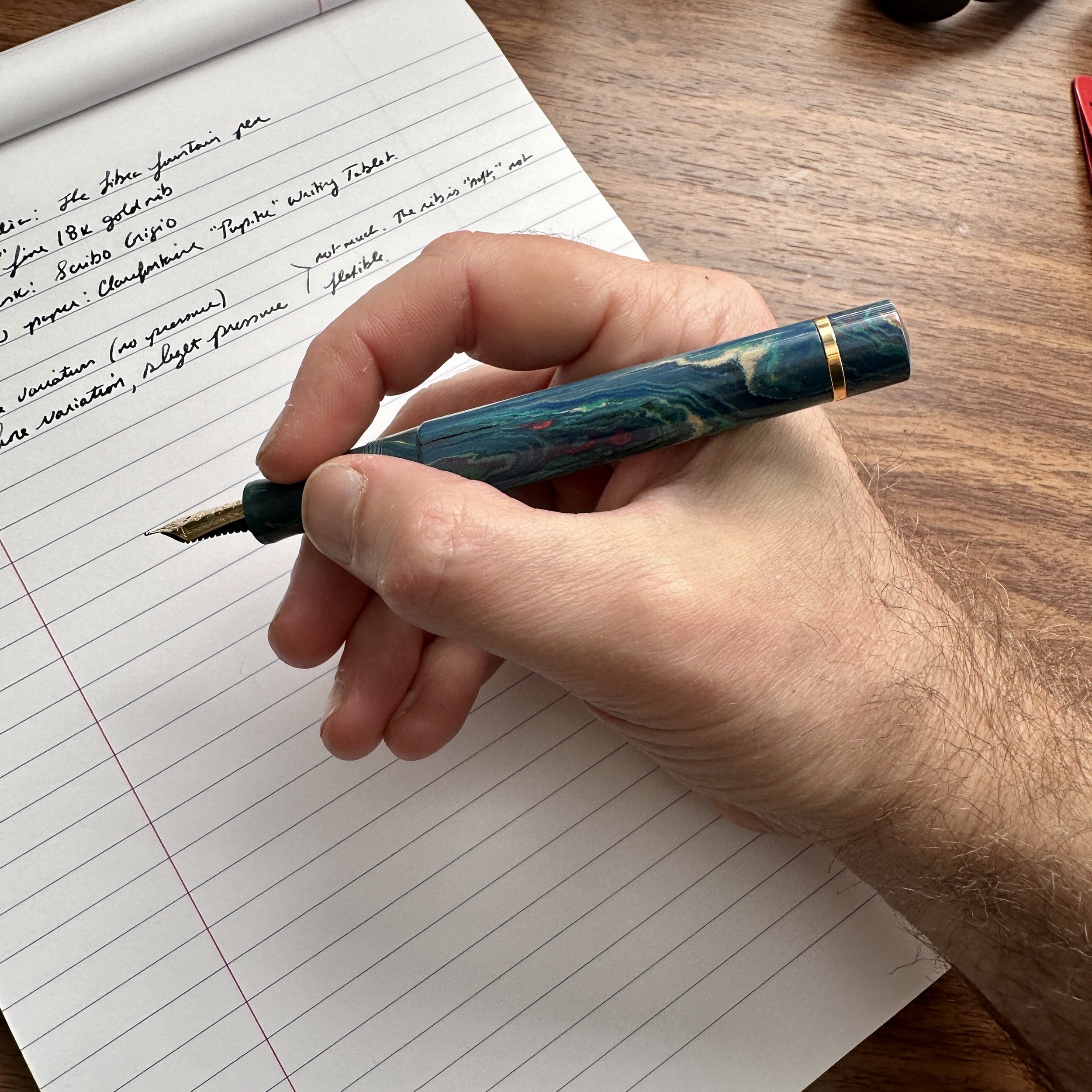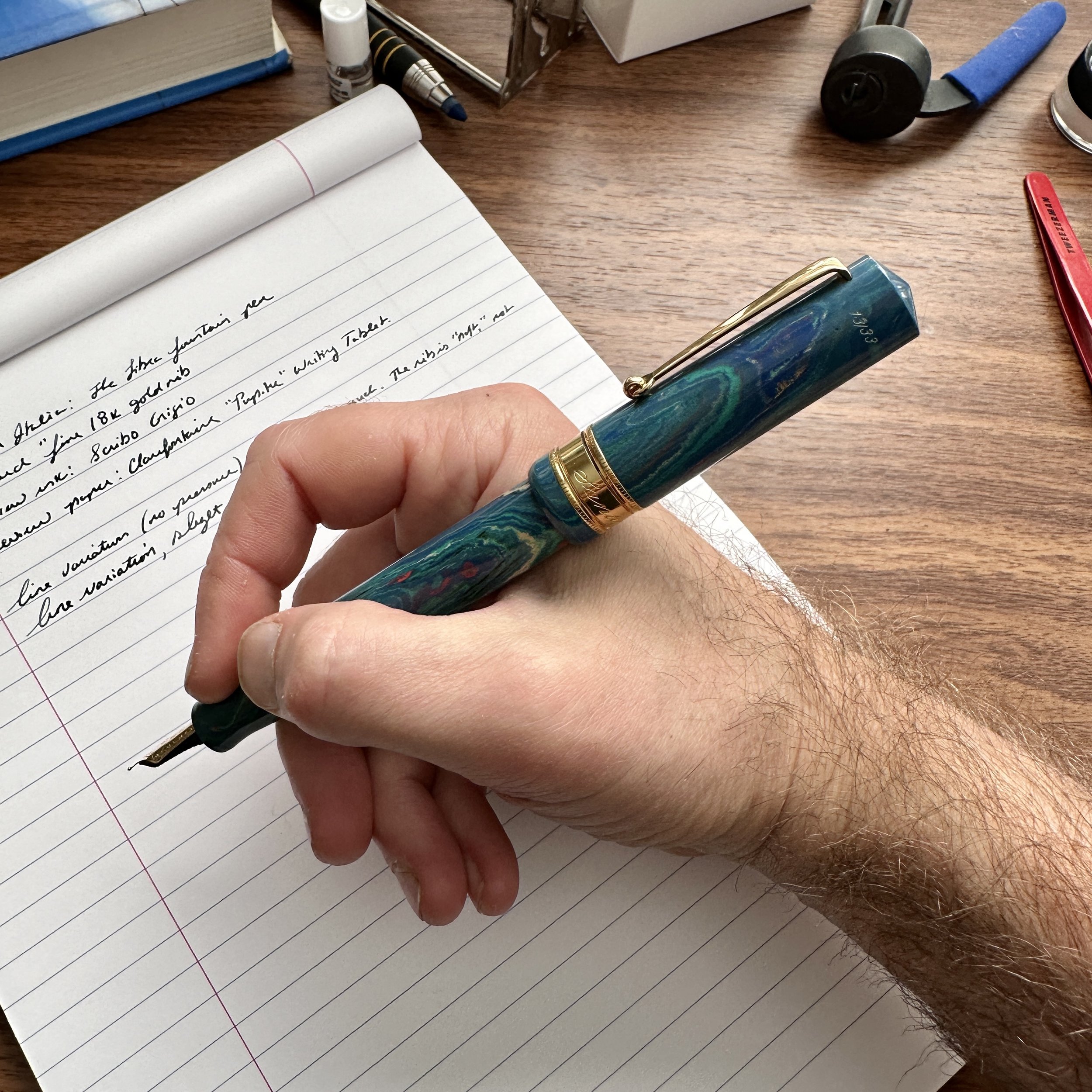Despite epitomizing so-called old technology, do you know what product continues to be enduringly popular? The woodcase pencil. Do you know what else tends to sell insanely well, though they’re a bit more of a cult taste? Hexagonal pens designed to mimic the feel of the pencil. Often marketed as “drafting” or “technical” pens, these are one of the most heavily requested products, both for review purposes and for the shop. The now-discontinued Rotring 600 fountain pen remains the darling of this category, yet for years TWSBI has sold a fountain pen version of its “Precision” line. I can’t believe I’m just now reviewing it.
Hexagonal Pens: They’ll never roll off the desk! The TWSBI Precision fountain pen, second from right, shown with the Caran d’Ache 849 Paul Smith (top), the Rotring 600 (right), the Mark’Style Days Metal Gel Ballpoint, an the TWSBI Precision Ballpoint/Mechanical Pencil (far left).
I first got my hands on the Precision ballpoints and mechanical pencils last year. I loved them both and they are constantly in my “go-anywhere” rotation, especially when I’m working and need a reliable, understated no-nonsense writing instrument. The Precision fountain pen is a larger take on the same format, with brushed “gunmetal” construction that assumes as understated a look as a fountain pen like this one can possibly have. I do appreciate added texture on metal pens: this one feels especially good in the hand with excellent balance and just the right amount of “grippiness” to prevent slippage.
Something about a technical pen gives you an increased sense of … precision… especially when writing or annotating. I opted for a fine nib on the fountain pen, and I’ve been using it regularly to take smaller notes. The nib is the same as on the TWSBI Diamond 580, though you will need to swap the nib manually (friction fit) as I’m told the nib units are designed slightly differently.
Though traditionally intended for “technical” professionals such as architects, there’s no reason you can’t use a so-called drafting pen for everyday writing. The Precision writes comfortably due to the rounded section (no knurling here), and I’ve found the pen to feel best unposted. That said, the piston knob/blind cap on the back of the pen does come equipped with a double set of o-rings to allow you to post the cap securely, and while a touch long for my taste, the pen certainly remains usable.
Like most TWSBI fountain pens, the Precision fills with TWSBI’s reliable piston mechanism, and this particular model includes an ink window just above the section threads so you can monitor your ink level. Here the Precision borrows from the TWSBI “Classic” - yet another TWSBI back-catalogue item I’ve never reviewed. While the Precision doesn’t hold as much ink as the TWSBI ECO or the Diamond 580, you’ll still get a significant amount of writing from each fill. I’ve had this one inked for a couple of weeks and it’s not run dry on me yet despite fairly heavy use at work. As noted above, the pen sports the same nib as the Diamond 580, and offers the same reliable writing experience.
The TWSBI Precision (Center) compared against a TWSBI Eco and a TWSBI Diamond 580. Size-wise, the precision sits in the middle of the pack, more akin to the Classic.
Takeaways and Where to Buy
The TWSBI Precision reaffirms, once again, my decision to spend some time revisiting companies’ “back catalogues” and reviewing older models that I bypassed in the early days of T.G.S. The Precision is an excellent fountain pen, especially for $80 (compared to $300+ for some of the vintage Rotrings), making it a great way to try out this type of writing instrument. The nibs are standard TWSBI Diamond 580 nibs, though the nib units are slightly different and you will need to swap the nib directly (by pulling and replacing) rather than using the Diamond 580’s threaded nib unit. The design offers TWSBI fans and/or those looking for a reasonably priced “technical” fountain pen something quite different to add to their rotation.
I’m somewhat surprised TWSBI has not expanded the Precision fountain pen lineup with at least one or two other colors, such as standard black and silver to match the ballpoint and mechanical pencil. Given the demand for this type of fountain pen, and Rotring’s exit from the technical fountain pen market, there should be a natural opening, and that brushed metal finish would look exceptionally good in multiple colors.
For further reading, be sure to check out our review archive featuring additional reviews of TWSBI and other brands. You can purchase the TWSBI Precision fountain pen, as well as other TWSBI products, directly from us in the T.G.S. Curated Shop. The content side of the Gentleman Stationer is entirely self-supported via the shop and the Patreon Program.
